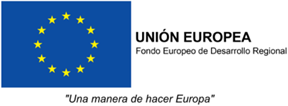Patentes
-
Background
Telomere fusions (TFs) can lead to genomic rearrangements and have been shown to play a critical role in several types of cancer. Despite their relevance in oncology, a deeper understanding of TFs in human cancer remains limited. On the other hand, the detection of tumours in the earliest state possible is absolutely critical for treatment and prognosis of cancer.
Technology Overview
Scientists at EMBL-EBI, CNIC and CSIC have discovered a new type of telomere fusion that is not present in blood from healthy donors but can be detected well in the blood of cancer patients. They developed computational tools for the reliable identification of these fusions. Additionally, predictive models have been established that allow for the detection of the presence of a tumour using sequencing data from a blood sample. We hereby present an approach for a highly specific, minimally invasive and early detection of cancer. The sensitivity and false positive rate are comparable to recent liquid biopsy analysis methods. The performance of the tools is comparable across cancer stages. The tool has been validated using close to 10,000 whole genome sequencing datasets.
Further Details
Francesc Muyas, Manuel José Gómez Rodriguez, Isidro Cortes-Ciriano, Ignacio Flores. “The ALT pathway generates telomere fusions that can be detected in the blood of cancer patients“, doi: https://doi.org/10.1101/2022.01.25.477771More info and contact: https://embl-em.portals.in-part.com/vJe06G6X7mKG?utm_source=technologies&utm_medium=portal&utm_term=latestBenefits- Good sensitivity and false positive rates values tested in more than 10,000 cancer samples- Very good sensitivity- Very high specificity- Similar performances across different stages, highlighting the potential of early detection of tumors in liquid biopsyApplications
The final goal is to develop a cancer screening and monitoring kit and a cloud-based computational solution for data analysis, thus allowing decentralized, fast and cheap analyses.
Opportunity
The technology is available for out-licensing or co‑development. EMBL Heidelberg also offers a technology evaluation program.
NúmeroPCT/EP2022/087821Fecha de prioridad23/12/2021TitularesEMBL-EBI, CNIC, CSICInventoresIsidro Cortés-Ciriano, Francesc Muyas Remolar, Ignacio Flores Hernández, Manuel José Gómez Rodríguez -
Background
Telomere fusions (TFs) can lead to genomic rearrangements and have been shown to play a critical role in several types of cancer. Despite their relevance in oncology, a deeper understanding of TFs in human cancer remains limited. On the other hand, the detection of tumours in the earliest state possible is absolutely critical for treatment and prognosis of cancer.
Technology Overview
Scientists at EMBL-EBI, CNIC and CSIC have discovered a new type of telomere fusion that is not present in blood from healthy donors but can be detected well in the blood of cancer patients. They developed computational tools for the reliable identification of these fusions. Additionally, predictive models have been established that allow for the detection of the presence of a tumour using sequencing data from a blood sample. We hereby present an approach for a highly specific, minimally invasive and early detection of cancer. The sensitivity and false positive rate are comparable to recent liquid biopsy analysis methods. The performance of the tools is comparable across cancer stages. The tool has been validated using close to 10,000 whole genome sequencing datasets.
Further Details
Francesc Muyas, Manuel José Gómez Rodriguez, Isidro Cortes-Ciriano, Ignacio Flores. “The ALT pathway generates telomere fusions that can be detected in the blood of cancer patients“, doi: https://doi.org/10.1101/2022.01.25.477771More info and contact: https://embl-em.portals.in-part.com/vJe06G6X7mKG?utm_source=technologies&utm_medium=portal&utm_term=latestBenefits- Good sensitivity and false positive rates values tested in more than 10,000 cancer samples- Very good sensitivity- Very high specificity- Similar performances across different stages, highlighting the potential of early detection of tumors in liquid biopsyApplications
The final goal is to develop a cancer screening and monitoring kit and a cloud-based computational solution for data analysis, thus allowing decentralized, fast and cheap analyses.
Opportunity
The technology is available for out-licensing or co‑development. EMBL Heidelberg also offers a technology evaluation program.
NúmeroPCT/EP2022/087821Fecha de prioridad23/12/2021TitularesEMBL-EBI, CNIC, CSICInventoresIsidro Cortés-Ciriano, Francesc Muyas Remolar, Ignacio Flores Hernández, Manuel José Gómez Rodríguez -
La hipertensión pulmonar (HP), definida como el aumento de la presión sanguínea pulmonar media por encima de los valores normales, abarca una serie de trastornos caracterizados por el aumento de la resistencia vascular pulmonar y el deterioro progresivo del ventrículo derecho. La incidencia de la hipertensión pulmonar en la población es elevada y se asocia con una alta morbilidad y mortalidad. Aproximadamente dos tercios de los pacientes con disfunción ventricular izquierda (sistólica o diastólica aislada) desarrollan hipertensión pulmonar. Actualmente, hay una falta de tratamientos para la hipertensión pulmonar.
Los investigadores del CNIC y de CLINIC han descrito un nuevo tratamiento efectivo para la hipertensión pulmonar de diferente etiología, tanto crónica como aguda. Han descubierto que la estimulación selectiva de los receptores adrenérgicos beta-3 tiene un efecto beneficioso en la hipertensión pulmonar.
Artículo científico: https://doi.org/10.1002/ejhf.2745
NúmeroEP2891490B1, US10532038B2Fecha de prioridad29/08/2012TitularesCNIC, CLINICInventoresBorja Ibáñez Cabeza, Valentín Fuster Carulla, Ana García-Álvarez -
Pulmonary hypertension (PH), defined as the increase of mean pulmonary blood pressure above normal values, encompasses a series of disorders characterized by the increase of pulmonary vascular resistance and progressive deterioration of the right ventricle. The incidence of pulmonary hypertension in the population is high and it is associated with high morbidity and mortality. Approximately two thirds of patients with left ventricular dysfunction (systolic or isolated diastolic) develop pulmonary hypertension. Currently, there is a lack of treatments for pulmonary hypertension.
CNIC and CLINIC researchers have described a novel effective treatment for pulmonary hypertension of different etiology, both chronic and acute. They have found that selective stimulation of beta-3 adrenergic receptors has a beneficial effect in pulmonary hypertension.
Scientific article: https://doi.org/10.1002/ejhf.2745
NúmeroEP2891490B1, US10532038B2Fecha de prioridad29/08/2012TitularesCNIC, CLINICInventoresBorja Ibáñez Cabeza, Valentín Fuster Carulla, Ana García-Álvarez -
Los nuevos biomarcadores de aterosclerosis buscan mejorar el diagnóstico y pronóstico de esta enfermedad. El CNIC, en colaboración con investigadores del DKFZ han descubierto una familia de 18 anticuerpos que presentan reactividad frente a la placa de ateroma, de tal manera que se podrían utilizar para diagnosticar la enfermedad. Además, la administración del anticuerpo A12 previene la progresión de la aterosclerosis y reduce los niveles de colesterol libre y LDL.
Artículo científico: https://doi.org/10.1038/s41586-020-2993-2
NúmeroEP20786476Fecha de prioridad23/09/2019TitularesCNIC, DKFZInventoresAlmudena Rodríguez Ramiro, Cristina Lorenzo Martín, Hedda Wardemann, Christian Busse -
Novel atherosclerosis biomarkers are in need to improve the strategies for diagnosis and prognosis of cardiovascular disease. CNIC and DKFZ researchers have discovered 18 novel antibodies that show reactivity against the atherosclerotic plaque, which can thus be potentially used for the diagnosis of this disease. Moreover, the use of one such antibody, A12, delays the progression of atherosclerosis and reduces the level of free circulating cholesterol and LDL.
Scientific article: https://doi.org/10.1038/s41586-020-2993-2
NúmeroEP20786476Fecha de prioridad23/09/2019TitularesCNIC, DKFZInventoresAlmudena Rodríguez Ramiro, Cristina Lorenzo Martín, Hedda Wardemann, Christian Busse -
La inflamación del miocardio o miocarditis es una enfermedad de etiología heterogénea, frecuentemente causada por una infección producida por patógenos, toxinas, fármacos o por un desorden autoinmune. Su variabilidad clínica y sus síntomas no específicos hacen que del diagnóstico de la miocarditis un proceso que no siempre es fácil. Hay una necesidad urgente por conseguir un método test preciso y rápido que proporcione información sobre tanto el diagnóstico como el pronóstico sobre el paciente cuando entra en el hospital con síntomas de infarto agudo de miocardio.
Investigadoras del CNIC han identificado el rol de un miRNA específico en cardiomiopatías y han estudiado su diferente expresión en plasma de pacientes comparados con voluntarios sanos. Este microRNA puede usarse como biomarcador para mejorar el diagnóstico de la miocarditis aguda.
NúmeroEP3384043B1, US11459612B2Fecha de prioridad01/12/2015TitularesCNICInventoresPilar Martín Fernández; Raquel Sánchez Díaz; Adela Matesanz Marín; Jesús Jiménez Borreguero; Francisco Sánchez Madrid -
Inflammation in the myocardium or myocarditis is a disease with heterogeneous aetiology, frequently caused by an infectious pathogen, toxins, drugs or by an autoimmune disorder. Its clinical variability and its nonspecific symptoms make the diagnosis of myocarditis a process that is not always easy. There is an urgent need for accurate, fast point-of-care tests that simultaneously provide diagnostic and prognostic information about a patient entering the hospital with symptoms of acute heart failure.
CNIC researchers have identified the role of an specific miRNA in cardiomyopathies processes and have studied the differential expression in blood plasma of patients compared with healthy subjects. These miRNAs can be used as biomarker to improve the diagnosis of acute myocarditis.
NúmeroEP3384043B1, US11459612B2Fecha de prioridad01/12/2015TitularesCNICInventoresPilar Martín Fernández; Raquel Sánchez Díaz; Adela Matesanz Marín; Jesús Jiménez Borreguero; Francisco Sánchez Madrid -
Investigadores de CNIC y Philips han desarrollado y patentado una técnica revolucionaria que permite realizar una resonancia magnética cardiaca (RMC) en menos de un minuto. Esta resonancia magnética cardiaca ultra-rápida, denominada ESSOS (Enhanced SENSE by Static Outer volume Subtraction), posibilita una evaluación precisa de la anatomía y la función del corazón y, además, reduce los costes e incrementa la comodidad del paciente. La técnica ha sido validada en más de 100 pacientes con patologías cardiacas diversas. Actualmente la tecnología está siendo validad a nivel internacional dentro de un proyecto H2020 liderado por el grupo.
La RMC es la técnica idónea para estudiar la anatomía, función y hasta composición celular del corazón; permite explorar el corazón de manera no invasiva y sin radiación. Y, a pesar de que la gran mayoría de hospitales dispone de equipos de resonancia magnética, su uso para el estudio del corazón de pacientes es limitado. La principal causa es el tiempo necesario para hacer un estudio completo (entre 45-60 minutos).
Por otro lado, los equipos de resonancia magnética de los hospitales realizan otro tipo de estudios, no solo de corazón, lo que dificulta todavía más la realización de estudios cardiacos de tan larga duración.
Para resolver esta limitación, los investigadores del CNIC, en colaboración con Philips, han desarrollado una técnica de aceleración específica para la adquisición de estudios de RMC. Esta técnica permite estudiar la anatomía y función (motilidad) del músculo cardiaco, así como las áreas cardiacas que han sufrido un infarto o que tienen fibrosis. Asimismo incorpora la posibilidad de analizar toda la caja torácica en 3D y, mediante algoritmos matemáticos, focalizarse únicamente en el corazón y los grandes vasos (parte móvil), con lo que se reduce el tiempo del estudio.
NúmeroEP3215863B1, US10416265B2Fecha de prioridad07/11/2014TitularesCNIC, PhilipsInventoresJavier Sanchez Gonzalez, Nils Dennis Nothnagel, Borja Ibáñez Cabeza, Rodrigo Fernández Jiménez, Valentín Fuster Carulla -
CNIC and Philips researchers have developed and patented a revolutionary technique that allows cardiac magnetic resonance imaging (CMRI) to be performed in less than one minute. This ultra-fast cardiac MRI, called ESSOS (Enhanced SENSE by Static Outer volume Subtraction), enables an accurate assessment of the anatomy and function of the heart and also reduces costs and increases patient comfort. The technique has been validated in more than 100 patients with various cardiac pathologies. The technology is currently being validated internationally within a H2020 project led by the group.
CMR is the ideal technique for studying the anatomy, function and even cellular composition of the heart; it allows the heart to be explored noninvasively and without radiation. Despite the fact that most hospitals have MRI equipment available, its use for studying the heart of patients is limited. The main reason for this is the time required to perform a complete study (between 45-60 minutes).
On the other hand, the MRI equipment in hospitals performs other types of studies, not only of the heart, which makes it even more difficult to perform cardiac studies of such a long duration.
To solve this limitation, CNIC researchers, in collaboration with Philips, have developed a specific acceleration technique for the acquisition of CMR studies. This technique makes it possible to study the anatomy and function (motility) of the cardiac muscle, as well as cardiac areas that have suffered an infarction or have fibrosis. It also incorporates the possibility of analyzing the entire thoracic cage in 3D and, by means of mathematical algorithms, to focus only on the heart and the great vessels (mobile part), thus reducing the study time.
NúmeroEP3215863B1, US10416265B2Fecha de prioridad07/11/2014TitularesCNIC, PhilipsInventoresJavier Sanchez Gonzalez, Nils Dennis Nothnagel, Borja Ibáñez Cabeza, Rodrigo Fernández Jiménez, Valentín Fuster Carulla






